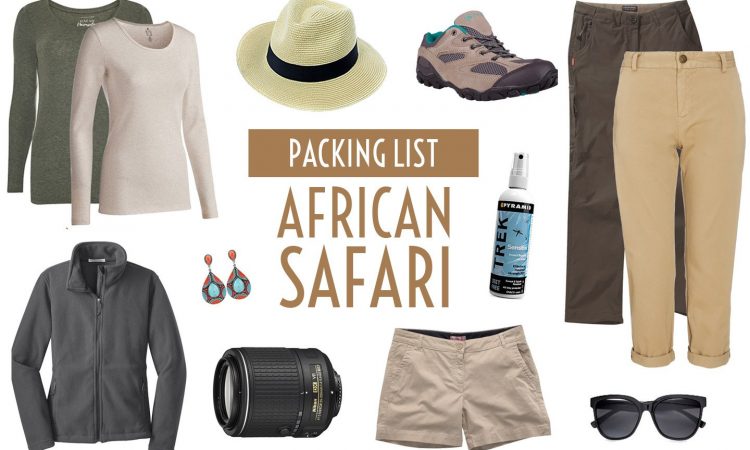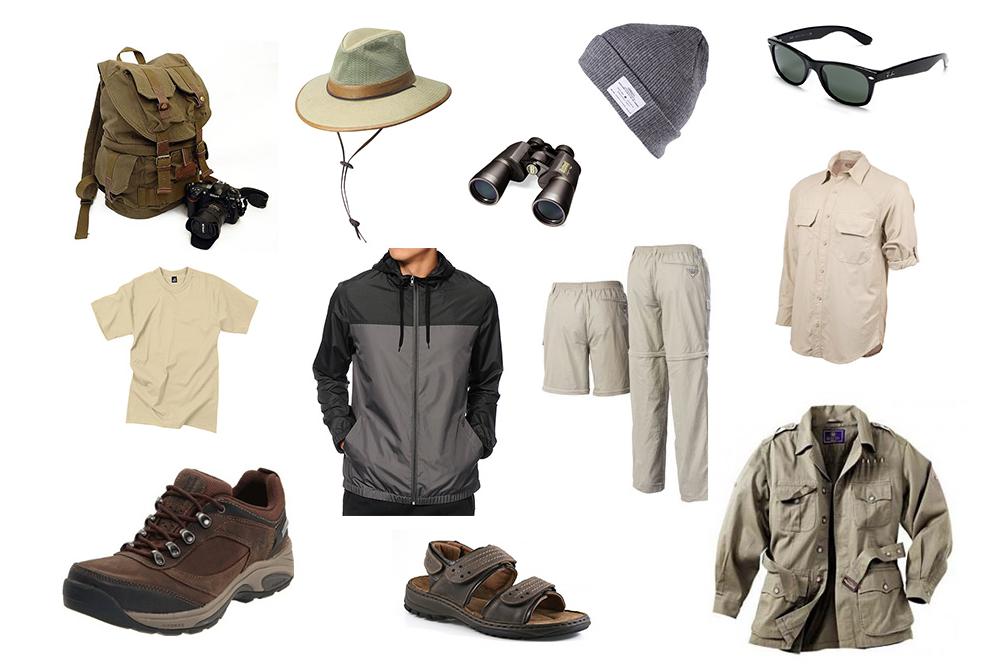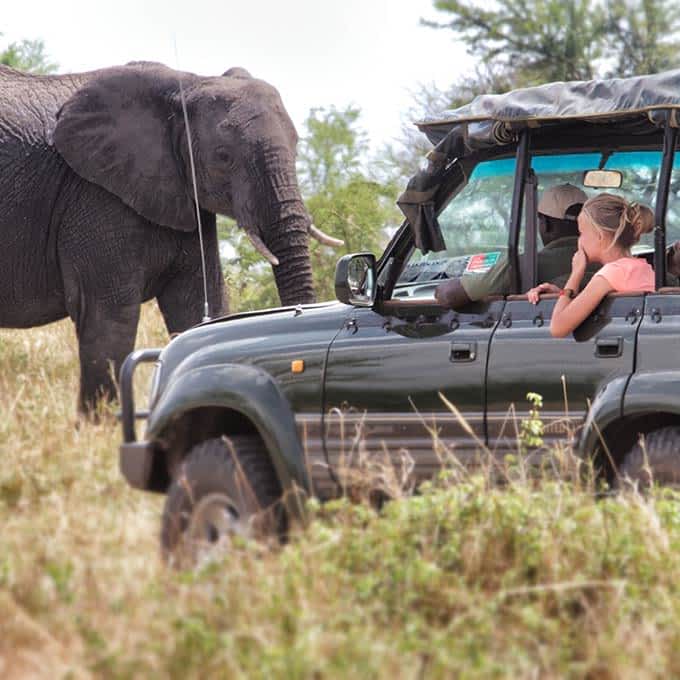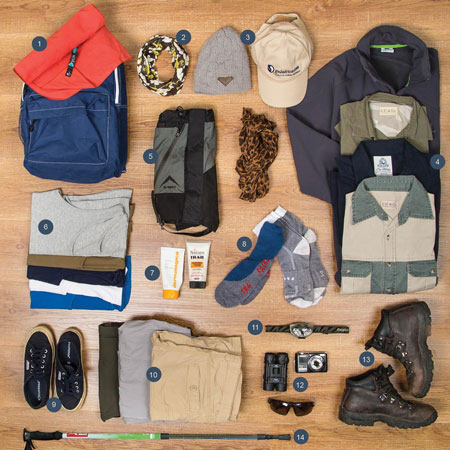What to Pack for a Serengeti Safari : Serengeti National Park, Tanzania’s best-known wildlife safari destination, is one of Africa’s top safari parks, attracting travelers from all over the world. The Serengeti National Park is home to massive wildebeest migrations, the Big Five, numerous bird species, and more. Expect to participate in game drives, walking safaris, bird watching, balloon safaris, and horseback riding safaris on your Serengeti safari experience.

When planning a safari to the Serengeti in Tanzania, it’s crucial to know what to bring and what not to bring (Packing list), since your packing list might have a positive or negative impact on your safari experience. Serengeti safari trips are similar to safari tours to other national parks such as Kenya’s Maasai Mara National Reserve, South Africa’s Kruger National Park, and Uganda’s Queen Elizabeth National Park. The safari packing list may be similar, but the main variation may be the weather conditions.
Your Serengeti safari packing list will vary depending on a variety of factors, such as the number of days you will be staying in the park, your Serengeti safari activities, your accommodation type, the timing of your safari tour (dry season or wet season), peak season or low season), safari purpose, safari group (family, couple, honeymooner), and so on.

However, in this article, we’ll show you the overall/general and most important safari packing list that you should bring on your Serengeti wildlife safari tour, and this packing list fits all types of activities you’ll be doing on your safari, including walking safaris, hot air balloon safaris, game drives, and bird watching.
Here are some packing lists for your wildlife safari in the Serengeti (Serengeti packing list).
Safari-themed shorts
The length of your Serengeti safari and the scheduling of your safari tour will determine your safari shorts. However, you’ll need a pair of shorts that will last the duration of your journey to the Serengeti while remaining fashionable. It is not required, but bringing safari shorts that are comfortable, robust, weather-resistant, and blend in with the surroundings can be beneficial.
Shorts may not be necessary for people visiting the Serengeti during the rainy season because it is too cold in the park and you will need to cover yourself with warm clothing most of the time. Therefore, long trousers are recommended. Shorts are ideal for travelers who want to experience the Serengeti during the dry season, when the park and the rest of the country are scorching hot, What to Pack for a Serengeti Safari.
Safari Trousers
Whatever safari activities you’re going to do in Tanzania, Serengeti national park, trousers are recommended to be included in your packing list. Light pants will be significantly more useful than shorts if you’ll be conducting bush walking safaris or hiking safaris while on your trip. New outdoor gear has synthetic materials incorporated into it to provide strength and give, so bottoms should have a little give as well. So your pants don’t rip as you jump in and out of the back of a safari truck.
A Safari shirts
The right safari shirt can make all the difference when it comes to staying comfortable in the Serengeti all day. The most practical shirt is a synthetic shirt, but cotton shirts have a more classic style. On a cold morning or evening, the cotton can also give a good base for warmth.
Safari Boots for Exploration
Safari boots are essential for any Serengeti safari vacation, whether you’re going on a walking safari, game drive, bird watching, or hot air balloon safari. When it comes to safari clothing and bushwalking, a nice safari boot is a must-have. Sure, you can dress up in khaki, leather, leopard print, and dark green, but what you wear on safari is meaningless if you don’t have the safari shoe. However, remember to protect your feet in the bush, as there are several dangerous tiny insects and even snakes.
A couple of pairs of socks
Because safari boots are required, don’t forget to bring socks, as the boots and socks are designed to be worn together. On your Serengeti safari excursion, a nice pair of socks is just as important as a good pair of shoes. Socks that will not warm your feet or limit your circulation are recommended. Socks, like boots, are essential for various safari activities, particularly walking safaris.
A safari cape
Another item to remember on your safari tour to Tanzania is to bring a safari hats, especially if you’ll be visiting the park during the dry season. Sunburn can be avoided by wearing a hat that protects your face and possibly the back of your neck.
Safari outerwear
This is especially suggested for those taking a safari excursion during the rainy season, but anyone visiting the park during the dry season should bring a jacket just in case. A lightweight safari jacket will be considerably more practical than a heavy-duty safari jacket if you’ll be doing bush walks while on your safari. Bring a thick jacket if you’re going at a high altitude or during Africa’s winter months, when the nights get cold. It’s also a good idea to have a safari jacket with a few pockets so you can store your belongings.
Sunglasses
When visiting Africa’s Tanzania’s Serengeti National Park for wildlife safaris, remember to wear sunglasses to protect your eyes from the sun. Sunglasses come in a variety of styles, and everyone should have at least one pair. For the sake of your eyes’ health, make sure they offer UV protection.

Safari backpacks
You’ll want to double-check that your safari bag meets the size requirements for small bush and charter flights. Because many African hotels are located in isolated areas, you may need to take a bush flight to begin your safari. A maximum of 30 kilograms is allowed on most bush flights.
Safari camcorder
A safari camera is essential for all safari vacations in Africa, not only Serengeti safaris. The safari camera will assist you in taking some of the best images, such as those of the migration river crossing, which you can use to make memories and share on social media sites like Instagram.
Binoculars
Safari binoculars are something you should never forget to carry on your Serengeti safari tour if you want to make the most of your safari experience. With your safari binoculars, you’ll be able to see even the most distant wild animals or small insects. Your safari guide will point to a dot in the distance and tell you that a cheetah is about to give birth, but you won’t be able to see it since you don’t have safari binoculars.
OTHER NECESSITIES SERENGETI PACKING LIST
- Remember to bring your passport, travel insurance, and any other necessary travel documents.
- Prescription and non-prescription pharmaceuticals such as pain relievers, antidiarrheal, antihistamines, and motion sickness tablets.
- A strong DSLR camera.
- Be sun-aware. Because you’ll be spending a lot of time outside and in the sun, bring plenty of sunscreen with a high SPF, a lip balm for dry or chapped lips, a pair of sunglasses, plenty of drinks to stay hydrated, and a bandanna to drape over your neck if you need more protection.
- For landscape photography, a decent wide-angle lens is recommended.
- Binoculars with a magnification of at least 10x so that you don’t miss a single sighting
THE SERENGETI PACKINGLIST IN A SUMMARY
- CLOTHING
- Lightweight, breathable, hand-washable, and quick-drying apparel is ideal.
- Shorts that are mid-thigh or longer in length.
- Pants that are long (zip-off pants are very useful).
- Shirts with short sleeves
- Shirts with long sleeves
- Socks and underwear.
- Women’s sports bras (roads can be bumpy).
- A sweater, a jacket, or a windbreaker are all options.
- A rain poncho, a rain racket, and pants
- A sun hat with a chin strap and a brim.
- A bandana
- Pajamas
- FOOTWEAR
- Walking shoes that are sturdy, comfy, and have a closed toe, preferably waterproof.
- Tennis shoes, sandals, fancy shoes, and/or flip flops are all acceptable options.
- Socks that are both comfortable and breathable, What to Pack for a Serengeti Safari.
- BAGGAGE/ LUGGAGE
- For internal flights, bring a suitcase or duffel bag that weighs no more than 20 kg.
- For daily activities and simple access to different national parks within Tanzania, bring a day pack (a rain cover is nice).
- Plastic bags that are waterproof can be used to store clothing and equipment (Ziplocs work).
- For airplane travel, use a packing cube, a compression bag, and a clear toiletry bag.
- Organizer for documents, money belt, and security pouch

- ELECTRONICS
- Electronics should be kept in sealed water-proof pouches (double bagged if possible).
- A headlamp or a flashlight will suffice.
- Memory disks, cameras, lenses, and filters.
- Tapes and a video camera
- Mobile phone.
- Chargers and batteries.
- GPS (Global Positioning System) for Geocaching, What to Pack for a Serengeti Safari.
- The timer on the alarm clock
- Calculating machine (for currency conversion).
- Adapter for electricity.
- TOILERIES (Personal care)
- Soap
- Shampoo and conditioner are essential.
- Shaving equipment.
- File, brush, and nail clippers.
- Toothbrushes and toothpaste are required.
- Towelette that are moist (hand-wipes).
- Hand sanitizers are a must-have item.
- A small towel and a washcloth can be provided in your accommodations.
- Toilet papers
- sunscreen
- Repellent for insects
- Q-tips
- FIRST AID
- In your traveling in a group, you only need one first aid kit, so coordinate with your travel partners.
- Ibuprofen, acetaminophen, or aspirin are all good options.
- Band aids or plasters.
- Antiseptic cream, disinfectant, antibiotic ointment
- Tape and gauze bandages
- vitamins
- Medicine for diarrhea
- Antihistamines
- Melatonin or another sleep aid may be used.
- Malaria tablets (talk to the doctor).
- Antibiotics (talk to your doctor).
- Medications on prescription (talk to your doctor).
- TRAVEL DOCUMENTS
- Organizer for documents.
- Passport
- Visas are required for all countries.
- E-tickets and airline tickets (make sure the name on the ticket matches the name on the passport).
- Copy of AIR travel itinerary
- Insurance card for medical treatment.
- Business cards.
- Copies of your passport, visas, driver’s license, airline tickets/schedules, travel itinerary, credit cards (front and back), travelers’ checks, frequent flyer numbers, travel insurance, and emergency contact information should all be made. Leave a copy at home and a copy in the luggage of a trip partner, then email them to yourself (or Google Docs).
- Vaccination records and a certificate for yellow fever.
- GUIDE AND LOCALS GIFT IDEAS
- Shoes, t-shirts, caps.
- Frisbees, Nerf football
- Candy and energy bars.
- Pencils and other school materials
NOTE, Avoid too many bright colors in your packing list since there not good in national parks. You’ll be able to blend in better with your surroundings and go unnoticed if you wear neutral colors. Clothing in bright colors, including white, will make you stand out like a sore thumb. Furthermore, neutral colors are easy to clean and less prone to showing stains when traveling.
Conclusion, The Serengeti packing lists might be a little confusing, and if you want to bring everything, you’ll end up with a lot of baggage to lug around, which can be uncomfortable. There are some items on your Serengeti safari packing list that you should never forget to bring, while others are simply recommended and may have no effect if you don’t bring them. The preceding packing lists are general packing lists for a Serengeti safari, but they are not mandatory.
Also, if you don’t want to carry a lot of items on your travels to the Serengeti, it’s best to bring only a few things with you, and the rest can be purchased when you get into Tanzania, in Arusha city, which has nearly all the safari equipment. For more information on the packing list for your Serengeti safari, please contact us (FOCUS EAST AFRICA TOURS), as we are ready to assist you with everything you need, including safari advice, to make your Serengeti safari, as well as other Tanzania safaris such as Ngorongoro, Mount Kilimanjaro, and Zanzibar, memorable and unforgettable.


